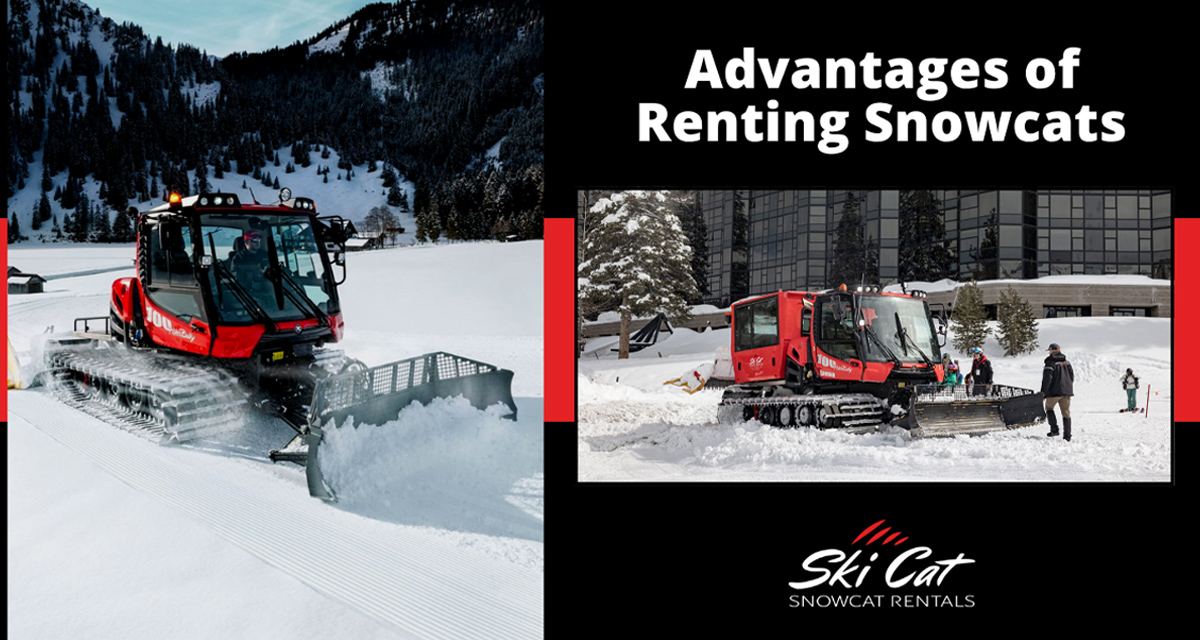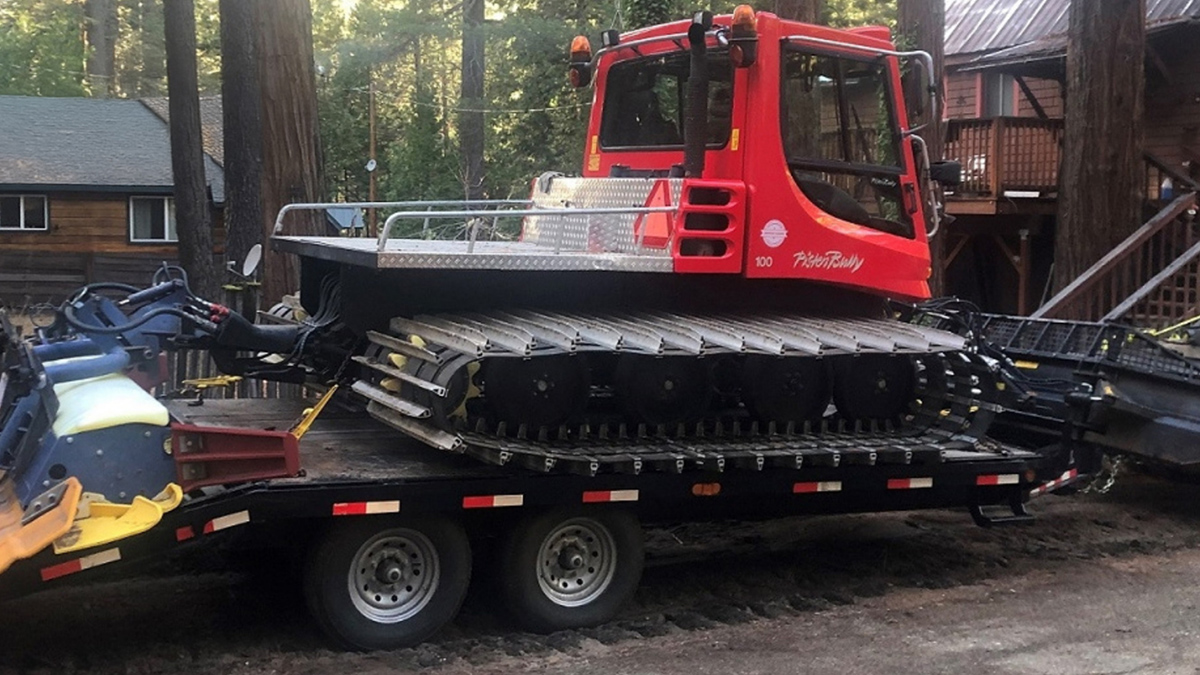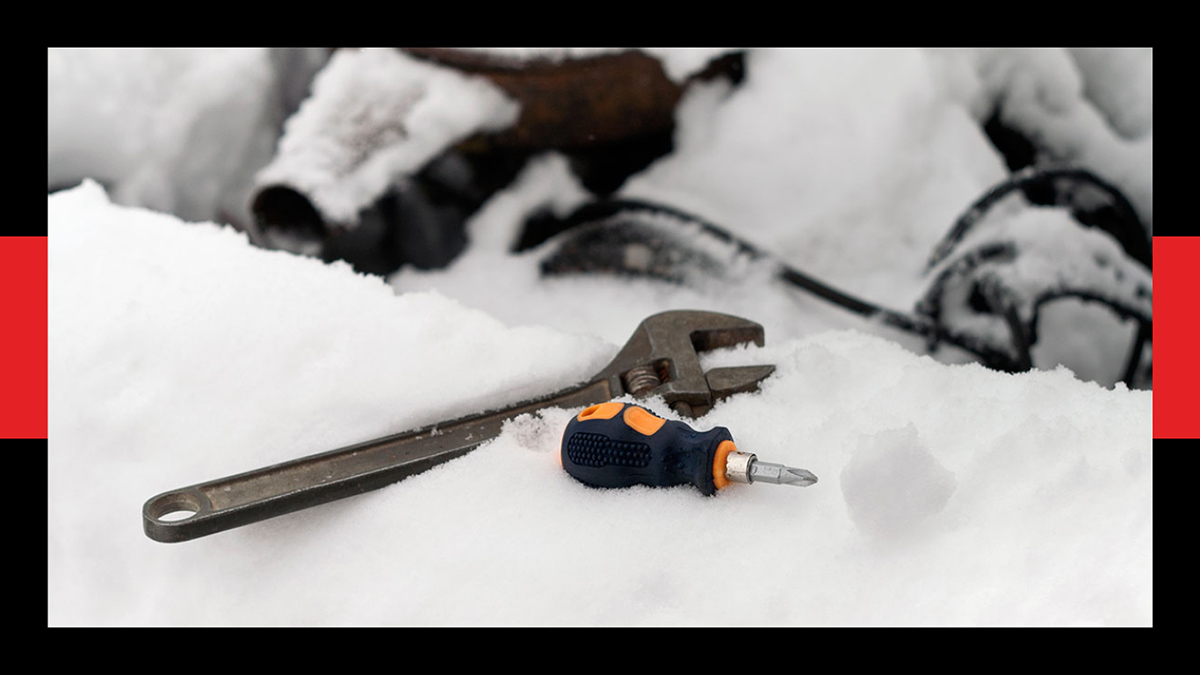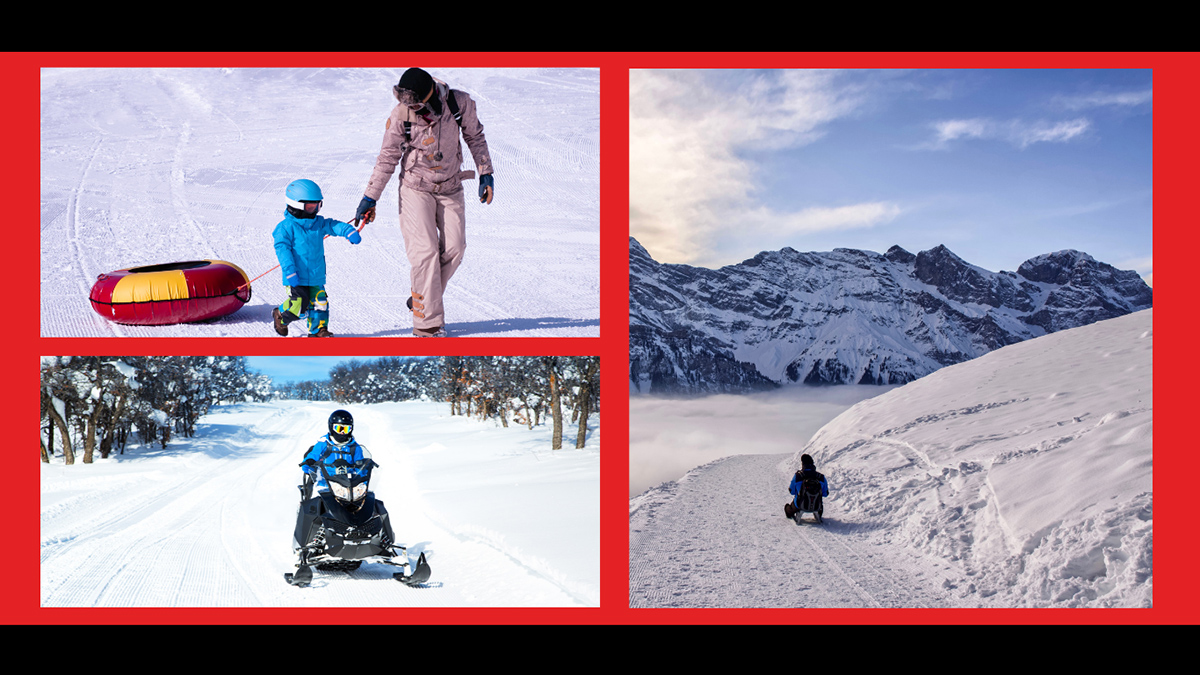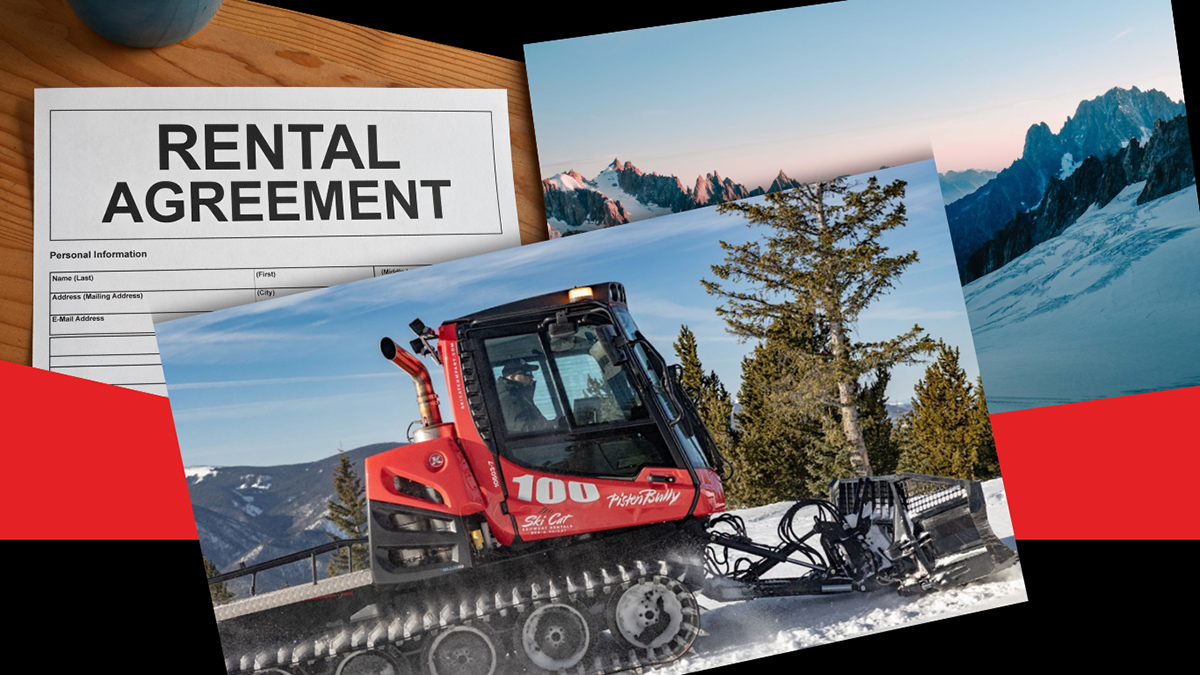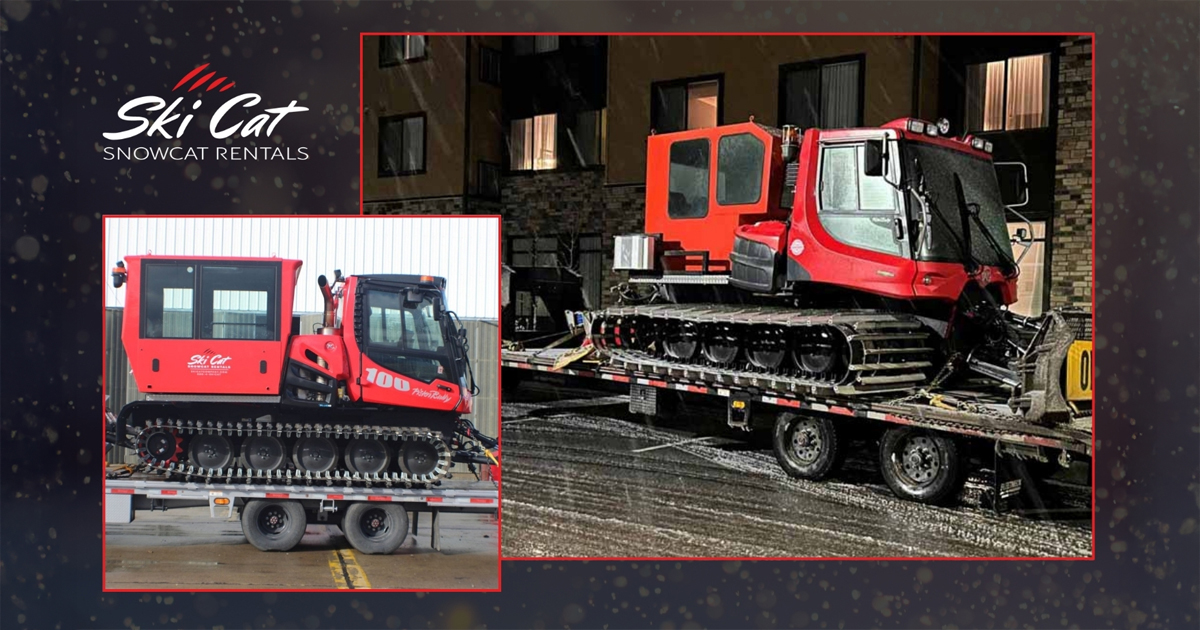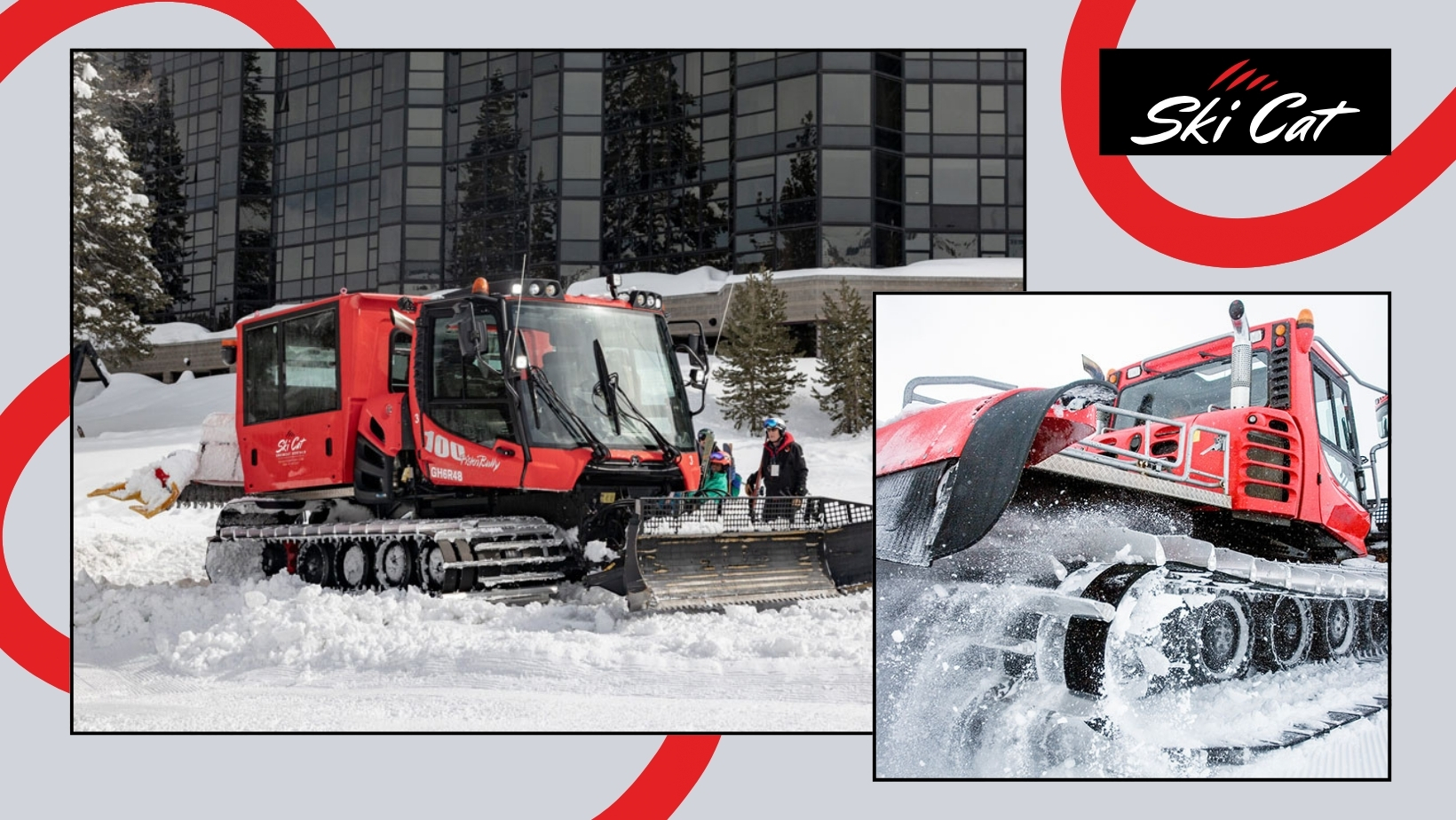Table of Contents
ToggleIf your business requires the use of a snowcat, the most logical solution may seem to be to purchase one. However, many do not consider the benefits of renting heavy equipment as opposed to the drawbacks of purchasing, including the lifetime costs of owning equipment. Renting offers greater financial flexibility, cash flow benefits, and lower long-term risk.
Discover the many advantages of leasing a snowcat rather than purchasing, and how owning a new snow groomer can lead to rapid depreciation and significant costs. Leasing offers several advantages, including preserving capital, reducing repair and maintenance expenses, eliminating the need to anticipate replacement equipment purchases, and enjoying transparent costs while minimizing risks. Then, find out if your organization or company is among those that stand to benefit most from leasing.
Equipment Depreciation Is Inevitable
Like all vehicles, new machinery will depreciate in value as time elapses. Snowcat depreciation occurs annually as the machine ages, particularly with heavy use and alongside significant advancements in technology. In general, if you purchase and then choose to sell your snowcat after owning it for a while, its reduced value could be shocking – worse, it will likely be extremely difficult to sell.
The need to replace heavy machinery is inevitable as machines become less efficient, less effective, or simply break down. Unfortunately, prices are increasing at a steady rate. For example, Pistenbully prices rose 23% from 2020 to 2024. Consider, too, that on average, your 10-year-old machine will realize a market depreciation of 60% to 80% of the original purchase price, and require an average of $8,000 to $12,000 annually in maintenance and repairs. Even if you are able to recover the original purchase cost by avoiding rental fees, you’ll not only come up short when a replacement is necessary – you’ll lose a considerable amount, especially when you factor in upkeep.
Think of it this way: would you be happy with a stock market purchase that plummets in value immediately after buying? That’s what happens with a snowcat purchase.
Over time, depreciation and upkeep costs result in a negative return on investment (ROI). Understanding a machine’s salvage value, or the approximate value that it will be worth once it is no longer usable, is an important part of determining ROI. It is also essential to determine this amount for tax purposes, as the yearly depreciation amount can be claimed as a deduction. If the machine has a zero salvage value, this means that it has no value for trading in or selling.
In addition, there are tax considerations, as well. Even if you have Depreciation to reduce your taxable income, that Depreciation must be recovered when the equipment is sold. It’s important to note that nothing is tax-free, only tax-deferred.
Preserve Capital for Higher ROI Investments
Purchasing large-ticket items like vehicles and machinery requires capital assets. If you are looking to buy a new snowcat, you will need significant capital assets to cover the purchase price. This is capital spent on heavy machines that could have been used for other purposes, such as improving trails, hiring more staff, enhancing marketing efforts, or growing other parts of your business that have a positive ROI.
Leasing a snowcat means you are investing in capital preservation rental equipment. Before buying a new snowcat, consider that depreciation begins immediately. For many organizations, the wiser option is to “use cash to promote revenue growth or invest in appreciating assets; rent depreciating assets.”
Leasing also affords your organization financial agility in multiple ways. Rent is charged monthly for the duration of the lease, which is ideal for organizations that are open only for part of the year. When you choose to buy, you must purchase insurance for the whole year; with a lease, you only need insurance for the season while using the machine, which is a significant savings. In addition, when you lease, you won’t incur additional annual property taxes payable to the local county.
Freeing up your budget to enhance your business, which would have been spent on capital and other upfront costs, is just one advantage of leasing.
Maintenance Costs Add Up – and Get Worse Over Time
Maintaining a snowcat can be very expensive. There are many factors to consider regarding the upkeep of these machines, and it’s essential to remember that costs have been increasing year over year.
These are some critical aspects of regular maintenance and how they interconnect with up to an 80% value depreciation to spell potential financial risk for your organization:
Scheduled Maintenance
Just like with an automobile, regularly scheduled maintenance is required to keep a snowcat machine running efficiently. Hydraulic inspections, oil changes, and electronic sensors are all essential maintenance tasks. Keep in mind that over the season, maintenance costs add up to around $2,500 each month, totaling $12,500 in maintenance upkeep for the entire busy season. Combined with a 6% to 8% decline in value year over year as the machine ages, many budgets just don’t support such low-ROI investments.
Repairs
When you own a snowcat, you are financially responsible for any necessary repairs. These repairs are not usually anticipated, but they should be expected due to the harsh conditions vehicles must endure, such as ice, snow, and challenging terrain. Repairs must be completed as quickly as possible to avoid downtime, which can disrupt your business operations.
A critical question to ask yourself is “What does downtime really cost?”.When you add up the most crucial expenses triggered by downtime – lost revenue, lost productivity, lost future business opportunities, reputation damage, compliance fines, legal fees, and even recovery costs – the price tag is likely much larger than the quickly vanishing upfront cost savings of your depreciating snowcat.
Part Replacements
Purchasing a snowcat means that you will also need to purchase spare and replacement parts. Currently, parts that are sourced outside of the US have a 25% tariff exposure and significant manufacturer markups. Unfortunately, they are essential to the operation of the equipment and likely to increase in service frequency as the machine ages.
Leasing Solves These Issues
One of the most significant benefits of renting snowcats is that the cost of maintenance and repairs is included. This saves you the stress of finding a service technician while also reducing the costs of upkeep. You also limit the waiting time for finding replacement parts, as they are readily available to you. If you have little to no experience with making repairs on large equipment, a lease repair plan can be a significant advantage. New Generation snowcats require extensive training, specialized tools, and computer programs, so they cannot be serviced as easily as past heavy equipment.
Want to know more about what’s included in a snowcat rental and how the process works?
Check out our Snowcat Rental FAQ for details.
Budgeting for Replacement Is Often Overlooked
When considering heavy equipment purchases, most businesses fail to budget for future replacement costs. In cases where a company only budgets for the initial purchase cost, they will find that they did not plan ahead for budgeting funds for the replacement equipment when the other machine’s life ends.
To ensure that there is enough money in the budget to purchase an eventual replacement, an estimate of the cost of salvage value plus replacement cost must be accounted for each month as a part of your operating budget. That number, combined with maintenance costs, is what it will take to always have the funds for the heavy equipment your business needs. Then consider that the funds used to purchase the machine are no longer available for other important uses, such as funding your marketing efforts or other enhancements to your business.
Compare the costs of operating with the costs of renting a snowcat in your area; most often, the cost of renting is substantially lower and more convenient. Renting ensures known and transparent costs.
Rentals Offer Predictable Costs and Tax Advantages
For most rentals, when you rent a snowcat, operating expenses are 100% tax-deductible. With a rental, the machine’s depreciation is on a schedule of about seven years, in which the initial cost is gradually paid off over time. Owning a snowcat, on the other hand, has a limited depreciation schedule.
Since there is no need to plan for equipment replacement or anticipate repairs and maintenance, creating a rental budget for snowcat machines is much more streamlined. Rental also simplifies accounting for seasonal operations. This is especially important for nonprofit or government organizations with restricted or limited funding.
If a company does not plan for replacing equipment, it will find that it cannot afford a new machine. Creating a budget after a snowcat purchase is an essential way to ensure that replacements for heavy machinery are possible. Leasing, however, eliminates this issue.
Risk Reduction and Reliability
Choosing to lease instead of buy a snowcat groomer means that you are receiving a machine that is newer and well-maintained. Ownership of any heavy machinery can be a liability, especially if you aren’t keeping up on maintenance. With a lease, maintenance and repairs for the snowcat rental are pre-planned, and you won’t need to worry about frequent surprise repairs. Overall, leasing can eliminate stress regarding the costs associated with expensive snowcat maintenance and upkeep.
Reduced Downtime
Leasing comes with reduced concern about extended downtimes. Downtime can be very costly for companies, especially for organizations that utilize volunteer labor or public services. If a purchased snow groomer breaks down, the owner is responsible for having it repaired as quickly as possible. However, many organizations lack a trusted technician on hand and are unable to obtain the necessary parts for repairs. To make matters worse, single or small fleet owners are often the lowest priority for the maintenance service providers necessary to facilitate repairs, which can mean weeks and months that the equipment is down. Downtime is the most frequent culprit responsible for the demise of businesses and clubs.
The High Cost of Downtimes
The precise cost of downtime is impossible to determine, as it is dependent on a variety of factors, such as the size of the fleet, the age of the snow grooming machine, and how operations are run. Potentially, the monetary cost of downtime could be anywhere from tens of thousands to hundreds of thousands of dollars.
Other costs associated with downtime include loss of revenue, operational setbacks, or risks to others’ safety. Your reputation could also be impacted by the downtime if clients find the state of your tubing slopes, ski slopes, or trails to be poorly maintained due to a lack of functional equipment.
Avoid Costly Downtimes
The significant expense of downtime alone likely has you considering the benefits of leasing a snowcat. When you rent, you can rest assured that your machine is relatively new and functioning at its peak performance due to consistent maintenance and repairs. You’ll also limit your waiting time for replacement parts, as there is easy access to a dependable source.
Who Benefits Most from Renting?
Renting snowcat grooming machines may not be for every organization, but renting is the best option for many organizations and situations. In fact, more than 50% of all the heavy equipment in the US is rented.
The following are some examples of organizations that can benefit from a snowcat rental:
Nordic and Snowmobile Clubs
Nordic and snowmobile clubs with seasonal or volunteer staff can benefit from renting, as their operations are limited to several months a year, which requires strategic budget planning. Renting has enabled these clubs to decrease both initial and total costs, as well as reduce the amount of maintenance and repairs. Leasing is compatible with the fixed budget – often with little room for unexpected expenses – frequently experienced by clubs.
Tubing Hills and Small Operators
Tubing hills and other small operators with short operating windows can also benefit from renting a snowcat due to many of the same reasons as Nordic and ski clubs. Tubing hills are only open a few months of the year, and they too need a budget that is easy to predict with few surprises. There is also no need to worry about depreciation, the costs of repairs, or where to store the machine.
For small operators, a transparent budget is essential, as many have limited funds and/or are only open for a short season. Instead of keeping the machine all year, renting also allows the organization to use the machine only when needed. This also saves the company from having to store it during times when it is idle. Overall, small operators can be freed of the stress of managing heavy equipment and instead focus on the needs of their company.
Government or Utility Organizations
Government or utility organizations with fixed budgets can also experience benefits from leasing snow groomers. Heavy equipment budgeting involves high upfront costs for the purchase of new machinery, enabling organizations to avoid these expenses. They are also exempt from the cost of upkeep, which is crucial for government organizations with tight budgets.
Utility organizations also benefit from rentals, as they can be assured of getting the latest equipment with the best technological advancements necessary for their operations. As utility work necessitates reliable, functional equipment, leasing a snow groomer is ideal to ensure regular maintenance and timely repairs without the added expenses.
Search and Rescue Teams
Renting a snowcat offers several advantages for search and rescue teams, providing reliability without draining capital. Leasing new equipment helps search and rescue organizations avoid the upfront costs associated with capital assets. The flexibility of using the machinery only during the season when needed is another benefit, as it saves the logistical decisions surrounding storing it for the rest of the year.
Because search and rescue teams often require unique snowcat accessories for their work, it is essential to ensure these are available at a moment’s notice. When you lease a snowcat, you are assured of receiving the machine most appropriate for the job.
Leasing A Snowcat: A Solid Financial Strategy
Buying a snowcat may be an option for some organizations, but it is not the most cost-effective strategy for most businesses. Put plainly, owning heavy equipment is rarely a good investment. Eliminating many of the long-term expenses of owning equipment highlights the benefits of renting. Avoiding depreciation, greater financial flexibility, preserving capital, cash flow benefits, convenience, and reducing long-term risk are just a few of the benefits your organization may experience.
Learn more about leasing from Ski Cat Company.
Contact us to ask about your next steps or even compare your current operating budget to a rental quote – you might be surprised at how much you save.
